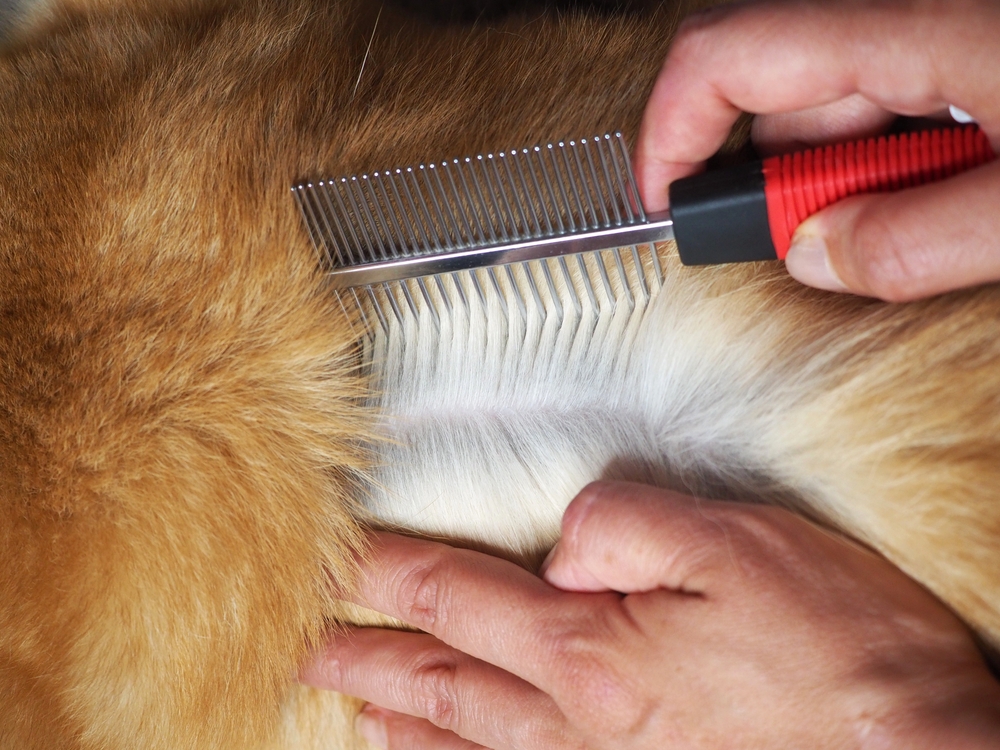Fleas and ticks are common parasites that can cause discomfort, irritation, and potential health risks for your dog. Preventing and treating these pests is essential for maintaining your dog’s health. This guide will cover everything from prevention methods to treatment options and tips for keeping your pet safe year-round.
1 – Understanding Fleas and Ticks
Fleas: These tiny, wingless insects can jump up to 7 inches high and feed on your dog’s blood, causing itching, irritation, and, in severe cases, anemia. Flea saliva can also trigger allergic reactions and skin infections.
Ticks: Ticks latch onto your dog’s skin and feed on blood. They can transmit diseases like Lyme disease, anaplasmosis, and Rocky Mountain spotted fever.
2 – Prevention Methods
Keeping fleas and ticks away is the best strategy. Here are several effective prevention options:
Topical Treatments: Applied directly to your dog’s skin, topical treatments often contain ingredients that repel or kill fleas and ticks for up to a month. Ensure you follow the product instructions carefully.
Oral Medications: Monthly oral treatments are available to kill fleas and ticks. These are particularly useful for dogs with sensitive skin or those who swim often, as they won’t wash off.
Collars: Flea and tick collars are easy to use and effective, especially for dogs who spend a lot of time outdoors. Some collars provide protection for up to 8 months.
Sprays: Flea and tick sprays can be used directly on your dog’s coat and around the house. They are effective for short-term protection but may need to be reapplied frequently.
Shampoos: Flea and tick shampoos can kill adult fleas and ticks on your dog during bathing. However, they usually don’t offer lasting protection and may require additional preventative measures.
Natural Repellents: Essential oils like lavender, cedarwood, and eucalyptus can repel fleas and ticks. Always consult your veterinarian before using essential oils, as some can be harmful to dogs.
3- Inspecting Your Dog for Fleas and Ticks

Regularly inspecting your dog helps catch any parasites early. Focus on areas like the armpits, between the toes, inside the ears, and around the tail. Run a flea comb through your dog’s fur to spot any signs of fleas or flea dirt (small black specks).
4- Treatment Options
If you find fleas or ticks on your dog, here’s what to do:
Removing Ticks: Use a pair of fine-tipped tweezers to grasp the tick close to your dog’s skin. Pull gently and steadily to avoid leaving any part of the tick embedded, which can lead to infection.
Flea Baths: A flea shampoo can quickly kill any adult fleas on your dog. Bathing alone, however, may not be enough to control an infestation.
Prescription Medications: If an infestation becomes severe, your veterinarian may prescribe stronger treatments, like medicated pills or injections.
Home Cleaning: Clean all bedding, rugs, and areas where your dog frequently spends time to prevent re-infestation. Use a vacuum cleaner on carpets, furniture, and floors, and consider flea-control sprays for areas your dog frequents.
5 – Seasonal Prevention Tips
Fleas and ticks are more active in warmer months, but prevention is a year-round commitment:
Spring and Summer: Increase inspections and consider additional preventative measures if your dog spends a lot of time outdoors.
Fall and Winter: Don’t skip treatments, as fleas can still thrive indoors in warm environments.
6 – Tips for Yard and Home Management
Yard Maintenance: Trim your grass and remove leaf litter, which can provide breeding grounds for fleas and ticks.
Home Treatments: Use pet-safe insecticides around your yard and home, especially near your dog’s bedding and play areas.
Regular Vacuuming: This can eliminate flea eggs and larvae in carpets and furniture, reducing the risk of re-infestation.
7 – Consult Your Veterinarian
Your vet can recommend the best flea and tick prevention and treatment plan based on your dog’s health, age, and lifestyle. Regular vet check-ups are also important, as some flea and tick-borne diseases may not show symptoms until they are advanced.
Preventing and treating fleas and ticks requires a consistent approach, combining regular inspections, appropriate prevention methods, and environmental management. With these tips, you can help your dog enjoy a flea- and tick-free life all year long.

